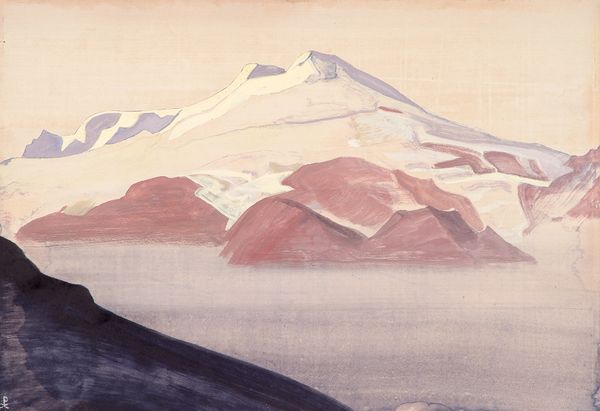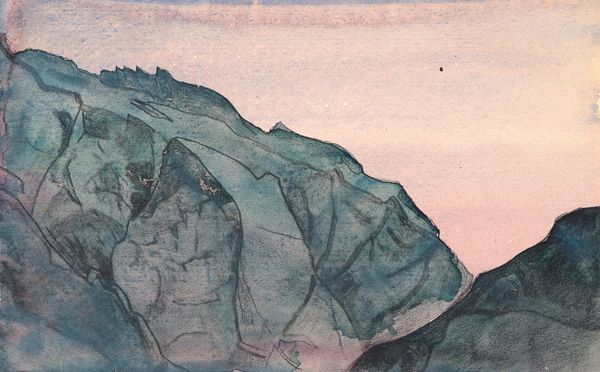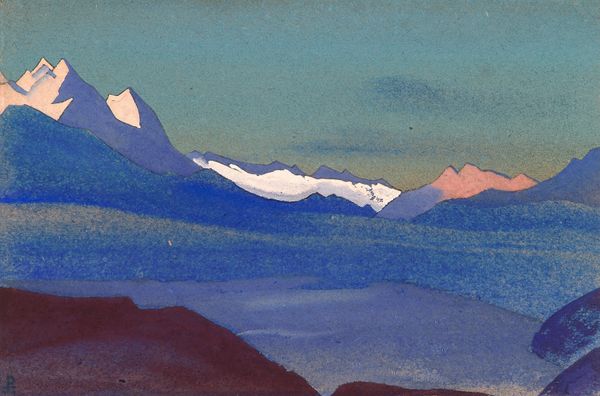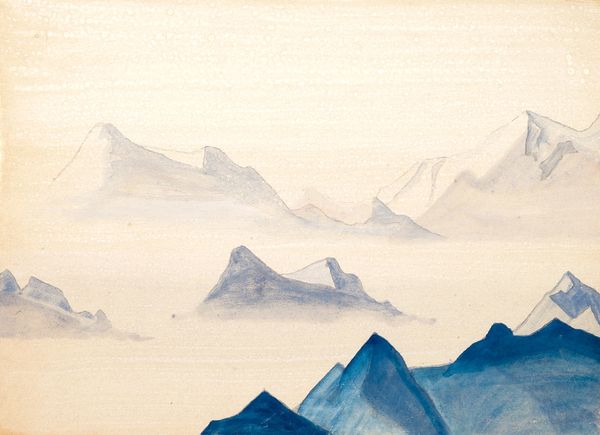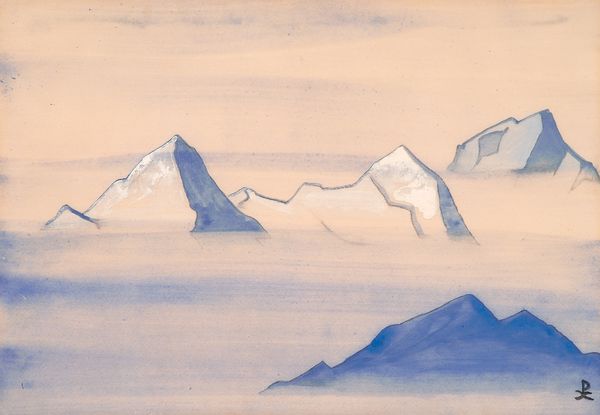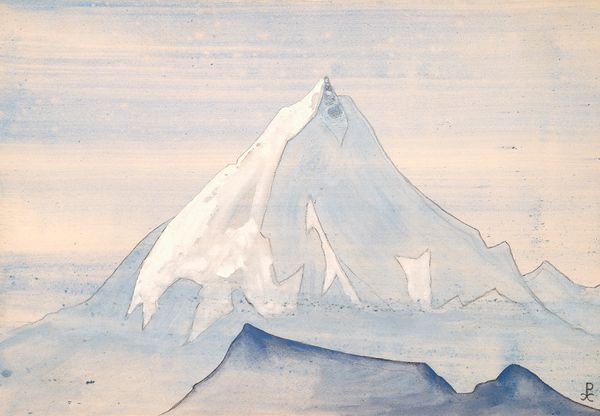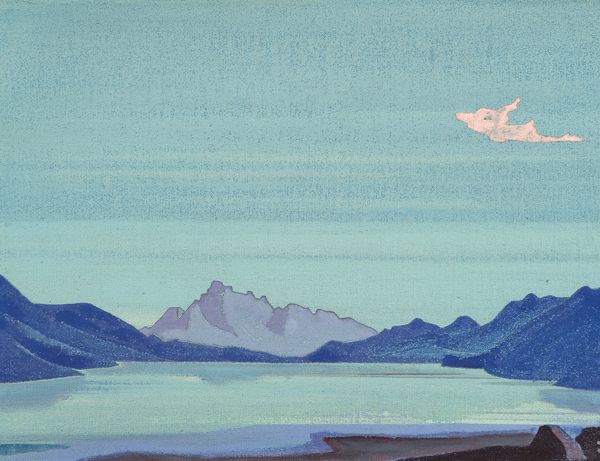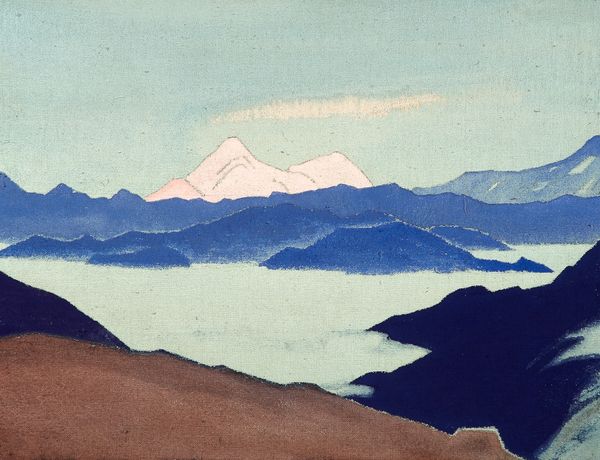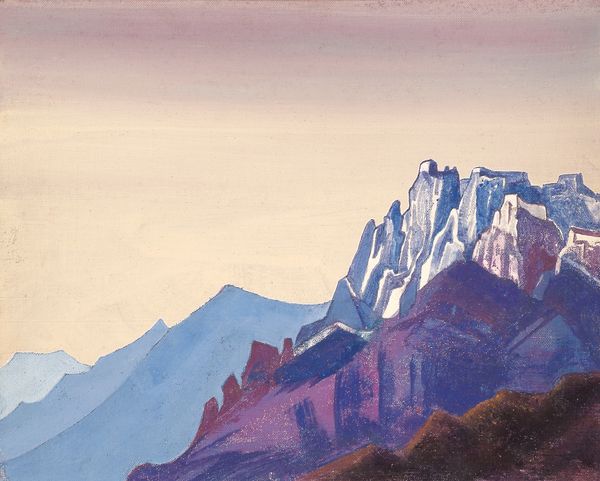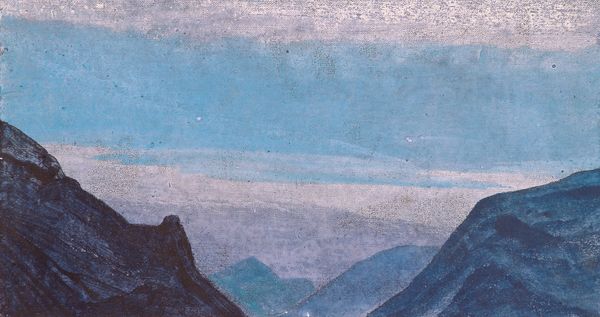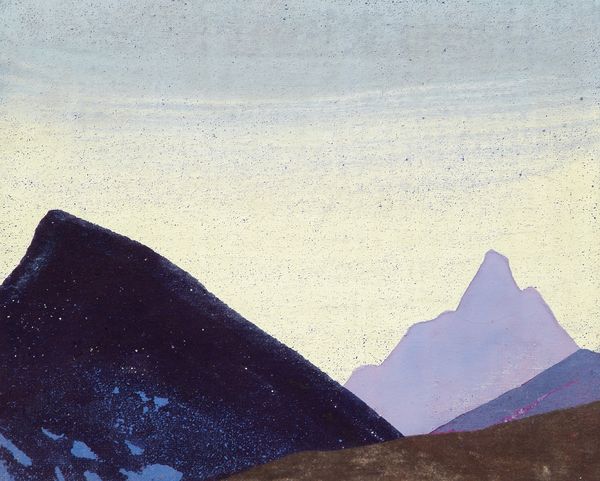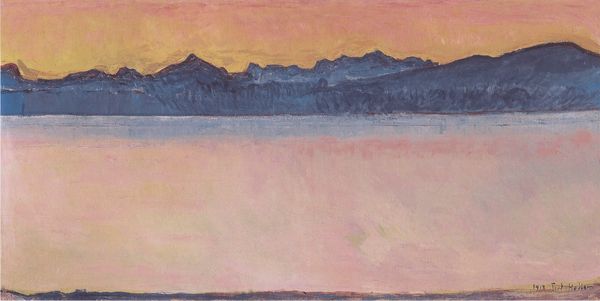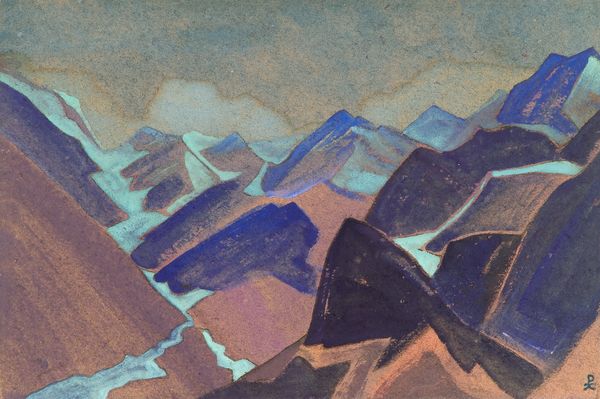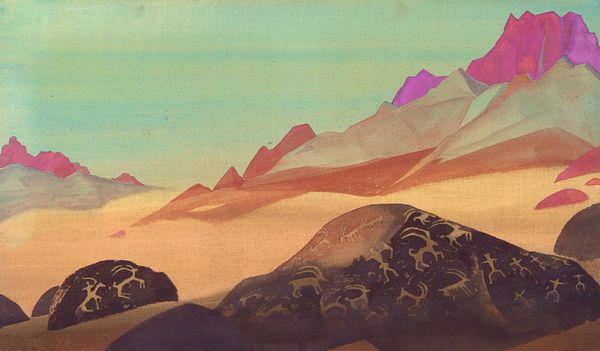
Dimensions: 14.5 x 23 cm
Copyright: Public domain
Editor: This is Nicholas Roerich's "Himalayas (study)" from 1934, made with tempera, likely en plein air. There's a really peaceful, almost mystical quality to the layering of mountains and the cool color palette. What do you see in this piece, especially considering its historical context? Curator: I see a profound commentary on cultural identity and power. Roerich wasn’t just painting mountains; he was constructing a visual narrative deeply entwined with his spiritual and political beliefs about Asia. Given that it’s a study, we should ask: what’s he studying? Editor: He's studying the mountains? Their forms, their light... Curator: Perhaps. But also, perhaps he's examining how the Western gaze, including his own, intersects with the landscapes and cultures of the East. Roerich's spiritual quest, which includes the Agni Yoga doctrine, also intertwined with a colonial vision where the East was seen as a source of enlightenment, but also one to be possessed. The choice of tempera adds another layer, doesn’t it? Editor: Because it's a traditional medium? Curator: Exactly. By using tempera and adopting plein-air practices, Roerich positioned himself within and yet apart from the artistic traditions of the East, reflecting a broader struggle to define Russia's place in the world, its Asian connections, and the rise of Eastern philosophy. It seems like cultural appropriation dressed up in pretty colors. Does that change how you perceive the artwork? Editor: It does, definitely. It’s not just a landscape, but a statement—a problematic one, at that. I wouldn’t have noticed the orientalist aspect without your input. Curator: These kinds of conversations can complicate, but also enrich, how we relate to artworks. There's value in uncovering such tensions, making us more critically engaged viewers.
Comments
No comments
Be the first to comment and join the conversation on the ultimate creative platform.
